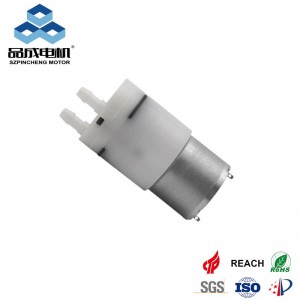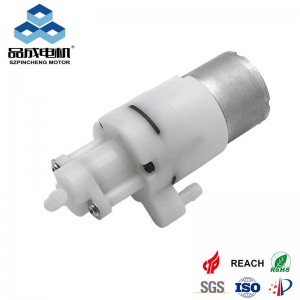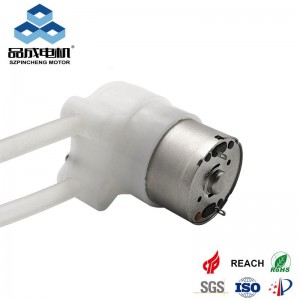Micro water pumps supplier
(With Simple Principle Diagrams)
Micro diaphragm pumps are the unsung heroes in medical devices, lab instruments, and industrial systems—moving fluids with surgical precision. Unlike piston or gear pumps, they use no rotating seals, eliminating leaks and contamination. Let’s dissect their working principle visually.
Key Components: The "Anatomy" of a Diaphragm Pump
┌───────────────────────┐
│ Inlet Port │ ← Fluid enters here
└───────────┬───────────┘
▼
┌───────────────────────┐
│ Check Valve (Open) │
└───────────┬───────────┘
▼
┌───────────────────────┐ ◄─── Diaphragm (Flexed Up)
│ Pump Chamber (Vacuum)│
└───────────┬───────────┘
▼
┌───────────────────────┐
│ Check Valve (Closed) │
└───────────┬───────────┘
▼
┌───────────────────────┐
│ Outlet Port │ ← Fluid exits here
└───────────────────────┘
Core Parts:
-
Diaphragm: Flexible membrane (PTFE/rubber) moving up/down.
-
Check Valves: One-way gates controlling flow direction.
-
Motor: Electromagnetic actuator driving diaphragm motion.
-
Chamber: Sealed cavity where pressure changes occur.
The 4-Step Working Cycle (Animated Principle)
Step 1: Intake Stroke (Suction)
DIAPHRAGM: Moves UP ▲
CHAMBER: Expands → Creates VACUUM
INLET VALVE: Opens (Outlet valve CLOSES)
ACTION: Fluid sucked into chamber.
Step 2: Compression Stroke (Discharge)
DIAPHRAGM: Moves DOWN ▼
CHAMBER: Contracts → Builds PRESSURE
INLET VALVE: Closes (Outlet valve OPENS)
ACTION: Fluid pushed toward outlet.
Step 3: Reset
Diaphragm returns to start position.
Check valves prevent backflow.
*(Cycle repeats 50–100x/sec!)*
Why Diaphragm Pumps Excel in Micro-Fluidics
-
Leakproof Design:
Fluid only touches the diaphragm/chamber—no shaft seals to fail.
→ Ideal for aggressive chemicals or sterile medical use. -
Self-Priming:
Creates strong vacuum to pull fluids vertically (up to 3m lift). -
Pulse-Free Flow (Advanced Models):
Dual-diaphragm designs cancel pulsation:plaintext┌───────┐ ┌───────┐ │ Dia 1 │→←│ Dia 2 │ → Smooth output └───────┘ └───────┘ -
Dry-Run Tolerant:
No lubrication needed → Runs safely without fluid.
Real-World Applications: Precision in Action
| Component | Role in Medical Device (e.g., Insulin Pump) |
|---|---|
| Diaphragm | Moves exact insulin doses (0.1–5µL) without bubbles. |
| Check Valves | Prevent backflow → Zero contamination risk. |
| Brushless Motor | Silent, efficient power (battery lasts weeks). |
Engineering Upgrades Driving Innovation
-
Smart Control:
Sensors adjust stroke speed for ±1% flow accuracy (e.g., in dialysis machines). -
Nano-Coated Diaphragms:
Graphene layers reduce friction → Lasts 100,000+ hours. -
IoT Integration:
Monitors performance via Bluetooth (predicts maintenance).
Visual Summary: How It All Fits Together
https://www.pinmotor.net/images/micro-diaphragm-pump-diagram-en.png
(Simplified cross-section showing intake/discharge phases)
Why Choose Diaphragm Tech Over Alternatives?
| Feature | Diaphragm Pump | Peristaltic Pump | Gear Pump |
|---|---|---|---|
| Leakproof | ✅ Yes | ❌ Tube leaks | ❌ Seal fails |
| Precision | ±1% flow | ±5% flow | ±3% flow |
| Dry-Run Safe | ✅ Yes | ❌ Tube melts | ❌ Seizes |
Explore Technical Specs & Diagrams:
Micro Diaphragm Pump Working Principle | Pinmotor
you like also all
Post time: Jul-08-2025




